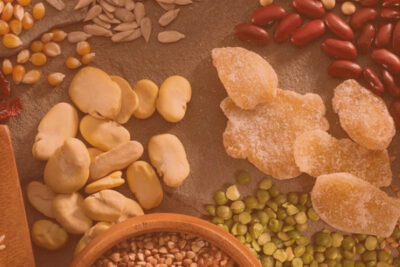
What is a good dinner for someone with celiac disease
What is celiac disease?
Celiac disease is a dangerous autoimmune disease that causes damage to the small intestine when gluten is eaten by people who have a gene that makes them more likely to get it. It is thought that 1 in 100 people around the world have it, but only about 30% of them get a correct diagnosis.
When people with celiac disease eat gluten, a protein found in wheat, rye, and barley, their body makes an immune reaction that attacks the small intestine. These attacks hurt the small finger-like structures called villi that line the small intestine and help the body absorb nutrients. When the villi are damaged, the body can't take in minerals as well as it should.
What is the diet for celiac disease?
The celiac disease diet is for people who have been told they have celiac disease. It means you have to stay away from gluten, a natural protein found in foods like wheat, barley, and rye.
When a person with celiac disease eats gluten, it triggers an allergic response in their body that damages the lining of their small intestine. Because of this, the small intestine can't take nutrients from food properly, which can cause diarrhea, weight loss for no clear reason, and malnutrition.
The only way to avoid this damage is to stick to the celiac disease diet, which is gluten-free.
What can people with celiac disease eat?
On the celiac disease diet, you can eat a lot of gluten-free things that don't need to be changed.
- Animal proteins include beef, chicken, dairy, eggs, wild game, lamb, pork, fish, turkey, and dairy products.
- Avocado, coconut oil, olives, oils, hard fats, and butter are all fats and oils.
- Fruits and veggies, whether they are fresh, frozen, dried, or in a can.
- Amaranth, buckwheat, corn, millet, quinoa, rice, sorghum, teff, wild rice, and teff are all grains and pseudocereals that don't have gluten.
- Herbs and spices: Both fresh and dried herbs and spices don't contain gluten, so you can use them freely.
- Beans, lentils, peanuts, peas, and soy are all legumes.
- Nuts and seeds of any kind, like almonds, cashews, chia, flax, pecans, pepitas, pine nuts, and walnuts.
There is also a wide range of specialty items, such as gluten-free bread, cereals, flour, crackers, pasta, and baked goods.
Good dinner examples for celiac disease patients
- Salmon baked with mustard and honey and served with brown rice and steamed green beans.
- Sliced hard-boiled egg with steamed green beans, baby spinach, sliced cucumber, sliced tomato, and chickpeas with oil and vinegar or gluten-free salad dressing.
- Grilled chicken cutlet marinated in garlic, oil, and onion powder, served with cooked brown rice, steamed broccoli, and mixed greens with oil and vinegar or gluten-free salad sauce.
- Skirt steak grilled with garlic, onion powder, and a pinch of salt, served with steamed cabbage and a medium baked potato with butter or margarine.
- Baked flounder cooked with chopped onions, tomatoes, cilantro, garlic, and onion powder, served with steamed spinach, rice, and a mixed green salad with sliced tomato and cucumber, oil and vinegar, or gluten-free salad sauce.
- Pork loin cut into 2-inch cubes, marinated in gluten-free Italian dressing with pineapple and cherry tomatoes, grilled, and served with steamed broccoli and corn with butter or margarine and a pinch of salt.
- Garlic, onion powder, salt, pepper, and Italian herbs were used to season the roasted chicken with carrots, potatoes, and onions.
- Chicken, shrimp, or beef that has been grilled or baked and put in a casserole dish with tomato sauce, mozzarella, and parmesan cheese on top, served with gluten-free pasta.
- Rice, corn, or quinoa pasta with tomato sauce and your favorite gluten-free dressing on a bed of mixed greens.
- Grilled shrimp on a salad of mixed greens and baby potatoes, topped with your favorite gluten-free sauce.
- Hand-pressed hamburger or turkey burger made from 100% pure ground beef or turkey, with onion and tomato slices, baked sweet potato fries, and green beans.
- Gluten-free frozen pizza cooked in the oven and served with a salad of mixed greens and gluten-free salad sauce.
Takeaway
The celiac disease diet is a gluten-free diet that helps lessen the symptoms of celiac disease, heals your gut, makes it easier to absorb nutrients, and lowers your risk of infertility, cancer, and osteoporosis.
Stay away from wheat, barley, and rye, as well as anything made with these grains. Instead, focus on foods and grains that are naturally gluten-free.
At first, the celiac disease diet can seem expensive and limited, but it can be easier if you plan ahead and learn to enjoy new foods.
References:
- https://www.stanfordchildrens.org/en/service/celiac-disease/gluten-free-dinner
- https://www.healthline.com/nutrition/celiac-disease-diet
- https://www.celiacedmonton.ca/gluten-free-diet/preparing-a-safe-gluten-free-meal-for-those-with-celiac-disease/
- https://celiac.org/about-celiac-disease/what-is-celiac-disease/